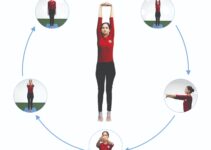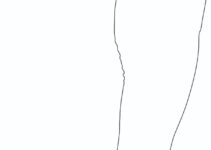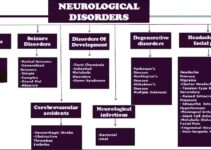What is padahastasana (Hand Under Foot Pose)?
Padahastasana, or Hand under foot pose, is an essential standing yoga asana. Pada means feet, hasta means hand, and asana indicates a yoga posture. Though it is not an easy pose to perform, it has numerous health and therapeutic benefits. It gives adequate stretching to the hamstrings, hips, calves, back of thighs, and the entire legs, including knees and ankles. The yoga pose shows excellent results with hamstrings, hips, and physical and mental disposition. It benefits weight loss, reduces belly fat, and improves flexibility, thyroid, and spinal health. It is also known as the ‘big toe pose’.

How do you do padahastasana step by step?
- Stand straight with feet 2 inches apart.
- Inhale slowly and raise your arms.
- Stretch up the body from the waist.
- Exhale and bend forward until both palms rest on the ground.
- Maintain this final posture for 10-30 seconds with normal breathing.
- Now inhale, come up slowly to the upright position
- Exhale slowly return to the starting position.
Padahastasana pose, breathing, and awareness
Breathe in while raising your body and arms upwards straight. Exhale as deeply as possible while bending forward and accentuating the abdomen’s contraction, especially in the final position. Do deep breathing while maintaining the pose. Again, I hope you’ll be willing to wait while coming to the original post.
Padahastasana number of rounds
Doing 2-3 rounds of Padahastasana is desirable during yoga sessions. But the foremost important thing is maintaining the Hand-under-foot pose yoga. Initially, it should try for 30 seconds, and the duration should increase gradually. Tadasana should be done after padahastasana as a counterpose. Padahastasana is an important yoga during Surya namaskar
10 wonder benefits of padahastasana yoga
Padahastasana has many benefits if one practices it per the instructions mentioned above.
- Weight loss: It’s a vital yoga pose to burn stomach fat. If you want to reduce your belly and belly fat, do this yoga pose regularly. Weight loss can be achieved satisfactorily if one can practice the above instructions.
- Prevents hair loss: Practicing the yoga pose correctly helps flow adequate oxygenated blood to the head region. It also stimulates and energies the hair follicles, thus suitable for hair health.
- Knees and ankles health: While practising the yoga pose, the legs remain straight and stretched, which gives suitable stretching to the knee and ankle regions, thus loosening the nearby muscles and flowing the right amount of oxygenated blood. All these ensure good health to the knees, ankles, hips, and other parts of the legs.
- Improves flexibility: It helps to enhance the flexibility of hamstrings, hips, calf, and thighs and works on the abdomen. Performing other poses becomes more manageable if one practises the yoga pose perfectly.
- Stimulates the thyroid gland: Since it’s a forward-bending yoga pose with the head towards the surface. The yoga pose regulates oxygenated blood flow to the endocrine glands, including the thyroid and pineal, thus helpful in the prevention of the thyroid.
- ENT disorders: Practising yoga regularly is good for the health of the throat, nasal region, eyes, and teeth.
- Spinal Health: Yoga practice shouldn’t be practised in case of spinal injuries. However, after regular exercise, it has become a boon for the spinal column and associated nerves and muscles as it tones and energises these regions.
- Abdominal bloating: The practising of the yoga pose speeds up metabolism, which ensures proper secretion of enzymes and gastric juices, which is beneficial for gastric problems, abdominal bloating, and indigestion.
- Concentration and alertness: It improves concentration and attention. If you practice it correctly, you can extract more advantages from other yoga poses.
- Cardiac health: The pose is beneficial in reducing the heartbeat rate and helps relieve mental and physical exertion.
Precautions
It’s an intense forward-bending yoga pose, but there are conditions wherein it shouldn’t be practised.
- Cardiac disorders
- Vertebral disorder
- Disc disorder
- Abdominal inflammation
- Hernia
- Severe back pain
- High blood pressure
- Knee problems
- Overstretching should be avoided as it may cause harm to the knees and ankle.
- Spinal injury
Beginner’s tip
Beginners and people with stiff backs find the final pose challenging to perform. Bend as far as you can and try to touch the floor with your fingers or hands, keeping the legs straight. If you cannot handle the floor with your hands, you shouldn’t worry. As you become more flexible through yoga practices, it becomes easier to touch the base. The legs must remain straight so that the leg muscles (hamstring muscles) are stretched and become more flexible.
Top facts and tips
- One shouldn’t bend forward beyond one’s comfort zone.
- It should be practised after backwards bending yoga, such as Bhujangasana, Chakrasana, and Setubandhasana.
- While bending forward, bend through the hips, not the waist. The legs should be straight throughout the practice.
- It helps to awaken the Chakra.
Modifications & variations
Practising padahastasana is not easy for beginners. It is also true that perfection in the pose comes after a certain period. Therefore, whatever one can bend forward is enough, and the effort should continue to bring the palms towards the surface. However, while performing it, try to make your legs straight.
Preparatory pose
Follow-up pose
- Janu sirsasana
- Utthita Trikonasana
- Virbhadrasana





